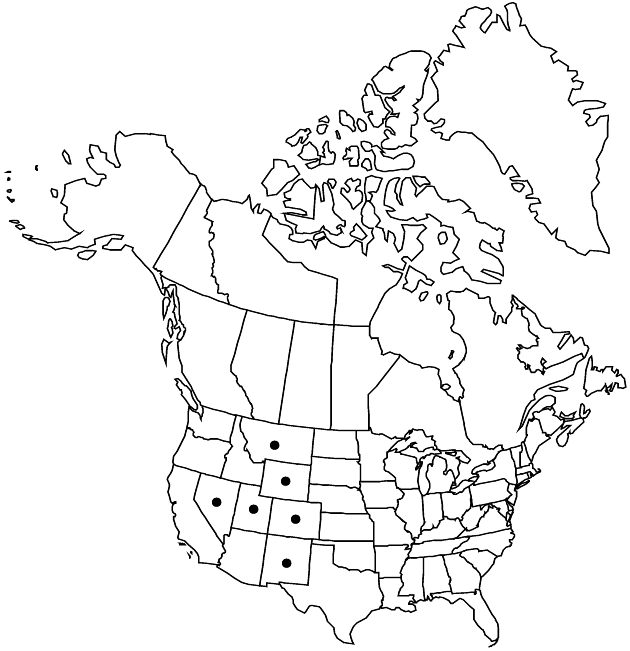Senecio amplectens
Amer. J. Sci. Arts, ser. 2, 33: 240. 1862.
Perennials, (5–) 10–60 cm (rhizomatous or with branched caudices). Herbage (often purplish-tinged) glabrous or sparsely and unevenly hairy, especially near leaf-axils and among heads, usually glabrescent. Stems single or loosely clustered. Leaves usually progressively reduced distally (basal sometimes smaller than proximal or mid leaves); petiolate (petioles shorter than to equaling blades, often clasping); blades broadly lanceolate or lanceolate to oblanceolate, (5–) 10–20+ × 2–4 (–5+) cm, bases tapered, margins dentate to denticulate (distal leaves smaller, bractlike). Heads nodding, 1–5 (–10). Calyculi of 2–5+ linear to filiform bractlets (lengths to 1/2 phyllaries). Phyllaries ± 13 or ± 21, tips often black or brownish (sometimes with scattered black hairs). Ray-florets usually ± 13, sometimes fewer; corolla laminae (10–) 15–25 mm. Cypselae glabrous. 2n = 40, ca. 175–180.
Distribution

Colo., Mont., N.Mex., Nev., Utah, Wyo.
Discussion
Varieties 2 (2 in the flora).
The varieties of Senecio amplectens are distinguished by morphologic tendencies and habitat preferences; there are many intermediates. Where the ranges of the two overlap, var. amplectens occurs at slightly lower elevations than var. holmii.
Selected References
None.
Key
| 1 | Plants (30–)40–60+; herbage sometimes sparsely hairy; leaves mostly proximal and mid cauline; phyllaries frequently black or purplish toward tips, sometimes with black hairs on abaxial faces | Senecio amplectens var. amplectens |
| 1 | Plants (5–)10–20(–30) cm; herbage glabrous or glabrate at flowering; leaves mostly basal and proximal; phyllaries green or light purplish, glabrous | Senecio amplectens var. holmii |